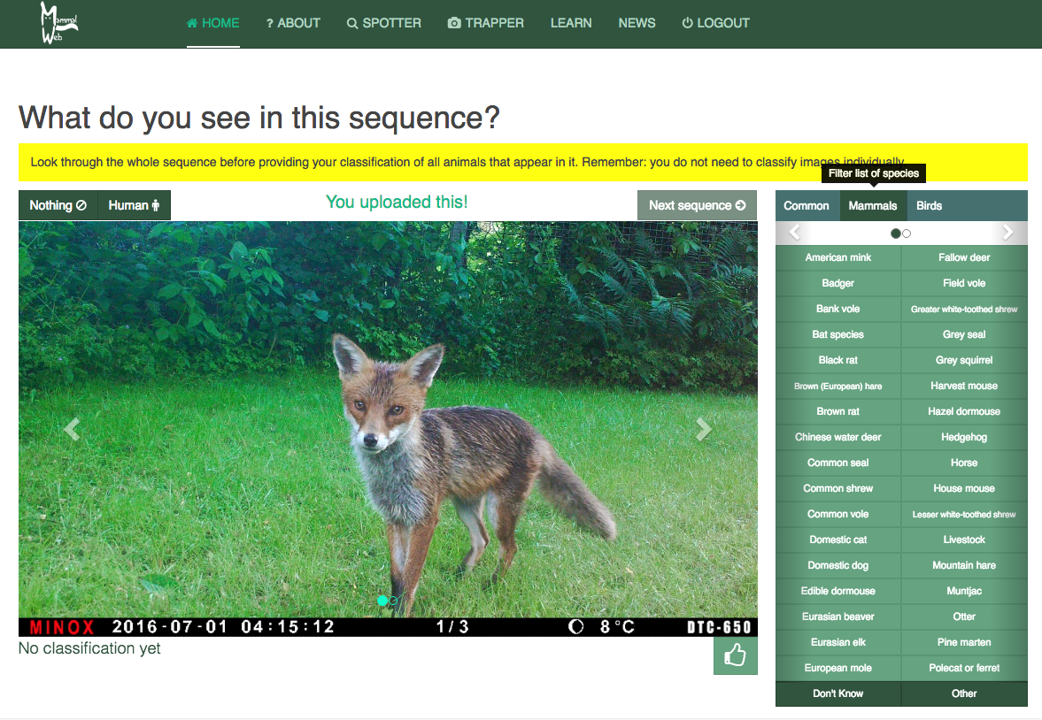09-07-2018
Many of you have asked us to increase the range of species that you can choose from when spotting. We will soon be implementing changes to give this much greater flexibility, without forcing you to wade through long species lists each time you classify what’s in an image sequence. Specifically, when you are spotting, you should soon see something like the screenshot below. At the top will be 3 or more “filters”, which will allow you to navigate rapidly between lists of common species, and full lists of either mammals or birds. In some cases, there might also be a list of species that are most likely to turn up among images associated with the project you are Spotting. For the vast majority of image sequences you look at, the pictured species will be in the “Common” list (which will usually be the default display). If you are lucky, however, sometimes you might see an unusual species. In those cases, you can click on the “Mammals” or “Birds” filters to find what you are looking for. Those lists are arranged alphabetically and you can use the page selectors to jump to a different page of the list. Bear in mind that it might take a little while before you find those rarer species in the lists. For example, if you are looking for a mink under “M”, you might need to check whether we have discriminated between mink species (in which case, the American mink will be under “A”). For some species, we have also retained less certain designations for when you know what sort of animal it is but you can’t identify it to species-level. For example, you can find “Unidentified bird” under “U” in the birds list, and "Small rodent (unknown species)" under “S” in the mammals list. If possible, however, do identify to species level.

We are particularly grateful to the Economic and Social Research Council’s Impact Acceleration Account for funding this (and some of our other recent developments) and to Helen for making our vague notions a useful reality! We’d welcome your feedback on this new approach once it’s available. Also, do let us know if we have overlooked any species, or if you think there are others that would be a higher priority for the “Common” species filters. As always, you can send suggestions to This email address is being protected from spambots. You need JavaScript enabled to view it..

 English (United Kingdom)
English (United Kingdom)  Nederlands (nl-NL)
Nederlands (nl-NL)  Magyar
Magyar  Deutsch (Deutschland)
Deutsch (Deutschland)  Croatian (Hrvatski)
Croatian (Hrvatski)  Polski (PL)
Polski (PL)  Español (España)
Español (España)